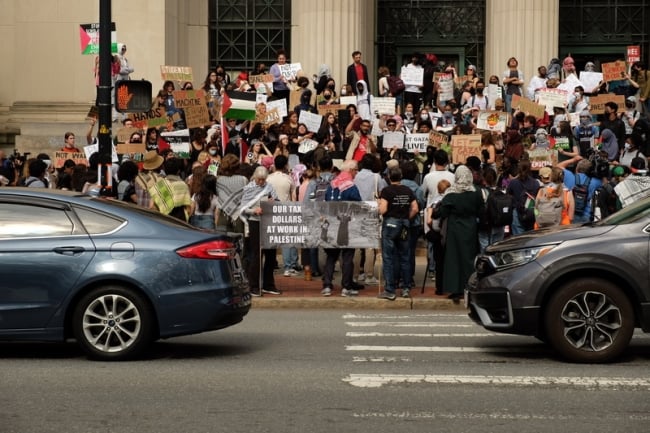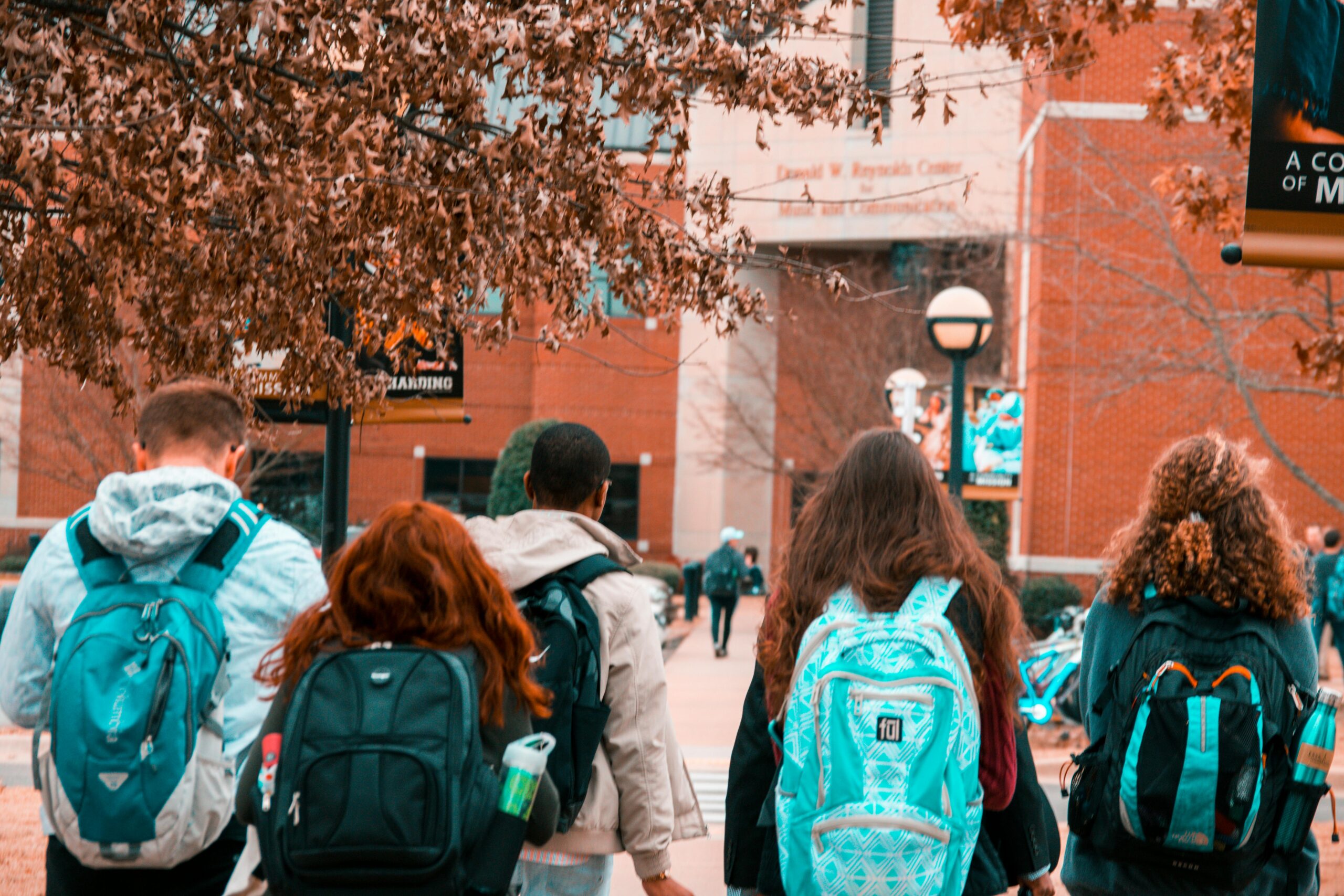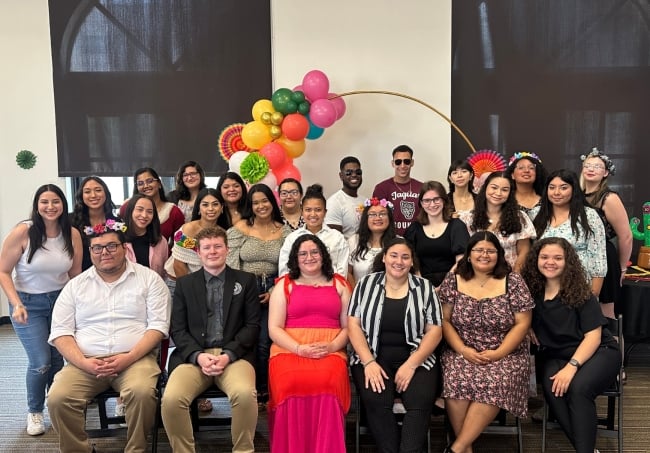
In May 2024, the Massachusetts Institute of Technology (MIT) issued interim suspensions to students involved in pro-Palestinian protests, sparking outrage and upheaval. These suspensions, which barred students from campus and evicted them from university housing with just a week to relocate, left many scrambling to secure new accommodations in one of America’s priciest housing markets. Administrators justified the actions as necessary to protect campus rights, but critics argue the measures were overly punitive, raising questions about free speech, due process, and student welfare. This article delves into the fallout, exploring the human toll, institutional policies, and broader implications for campus activism.
The Protests and Their Aftermath
On May 6, 2024, MIT police dismantled a pro-Palestinian encampment on campus, part of a wave of similar protests nationwide. Students had been asked to vacate by 2:30 p.m., with warnings of potential suspensions and housing evictions for non-compliance. While most left, some rallied outside, later re-establishing the encampment, prompting swift administrative action.
Two days later, over two dozen students received interim suspension notices, effective immediately. These notices barred them from campus facilities, including dorms, and gave them until May 15 to vacate university housing. For students like Zeno, a second-year MBA student with a young daughter, the sudden loss of housing was a crisis.
The protests, organized by groups like the Coalition for Palestine, demanded divestment from entities tied to Israeli policies. They reflected a broader surge in campus activism, with similar encampments at Columbia, UCLA, and elsewhere. MIT’s response, however, stood out for its rapid escalation to suspensions and evictions.
As a journalist covering higher education, I’ve seen protests ignite campuses, but MIT’s swift measures felt uniquely severe. I recall a 2020 protest where students faced warnings but no immediate evictions. The contrast underscores how institutions are grappling with heightened political tensions.
The Human Cost of Suspensions
For suspended students, the consequences were immediate and profound. Zeno, a graduate student living with his family in MIT housing, faced the daunting task of finding a new home in Cambridge, where average two-bedroom rents exceed $4,000 monthly. His daughter’s disability required proximity to her specialized school, complicating the search.
Prahlad Iyengar, a first-year graduate student, was also evicted, moving into a friend’s basement with just three bags of essentials. The loss of his Presidential Graduate Fellowship stipend added financial strain. He described the experience as “surreal,” highlighting the emotional toll of displacement.
Over 400 MIT graduate students live with families in campus housing, and 2,400 reside in graduate residences overall. The evictions disrupted not just students but their dependents, raising ethical questions about the proportionality of the punishment.
In my reporting, I’ve met students facing housing insecurity, but the speed of MIT’s evictions was striking. A friend once lost campus housing due to academic issues but had months to prepare. MIT’s one-week deadline felt like a pressure cooker for already stressed students.
[](https://www.insidehighered.com/news/students/residential-life/2024/05/20/mit-student-protesters-barred-campus-housing)
Stories of Displacement
Zeno’s case gained attention when media outlets like the Boston Globe reported his plight. Public pressure led MIT to offer him a deal to stay in his apartment if he ceased protesting. He accepted, prioritizing his daughter’s stability, but felt the compromise undermined his activism.
Iyengar, however, had no such reprieve. With no university support for relocation, he relied on the Coalition for Palestine’s network. The lack of institutional assistance left him feeling abandoned by MIT, an institution he’d chosen for its prestige and community.
Other students faced similar struggles. X posts from May 2024 revealed seniors worried about missing graduation and international students fearing visa complications due to suspensions. These stories paint a picture of widespread disruption.
I recall interviewing a student displaced by a campus policy years ago. The emotional weight of losing a home mid-semester lingered long after. MIT’s actions echo this, amplifying stress during a critical academic period.
MIT’s Rationale and Policies
MIT administrators defended the suspensions, citing the need to protect the “rights and privileges of everyone on campus.” An FAQ on their website argued that the encampment disrupted communal spaces and posed safety risks, based on experiences at other campuses. They emphasized that students received prior warnings about potential consequences.
The university’s disciplinary policy allows interim actions to ensure community safety or prevent further misconduct. Violations cited in suspension notices included disorderly conduct, property damage, and misuse of campus facilities. However, students like Zeno contested these, arguing their actions were peaceful expressions of free speech.
Interim suspensions are meant for extreme cases, according to Jim Neumeister, a researcher at NORC at the University of Chicago. He noted that universities set their own thresholds for “threats to safety,” giving MIT leeway to act swiftly, provided they followed their policies.
[](https://www.insidehighered.com/news/students/residential-life/2024/05/20/mit-student-protesters-barred-campus-housing)
In my experience, campus policies often prioritize order over dialogue. A 2018 protest I covered led to warnings but no suspensions, as administrators opted for mediation. MIT’s approach suggests a shift toward stricter enforcement.
Legal and Ethical Questions
Cambridge attorneys raised legal concerns, arguing that MIT’s evictions violated Massachusetts tenant protections. In a letter from the National Lawyers Guild, they demanded court orders for evictions, asserting that students have the same rights as other renters. MIT’s failure to pursue legal processes sparked criticism.
[](https://www.insidehighered.com/news/students/residential-life/2024/05/20/mit-student-protesters-barred-campus-housing)
Ethically, the interim nature of the suspensions raised red flags. Zeno told reporters that “interim punishments” causing “noninterim damage” without due process were unfair. The lack of hearings before evictions fueled perceptions of heavy-handedness.
Brian Glick from the Association of Student Conduct Administration noted that interim actions should be rare, reserved for serious disruptions like violence or property damage. Critics argued MIT’s response was disproportionate to the protest’s impact.
[](https://www.insidehighered.com/news/students/residential-life/2024/05/20/mit-student-protesters-barred-campus-housing)
I’ve covered cases where universities faced legal pushback for bypassing due process. A 2019 incident at another institution saw suspensions reversed after lawsuits. MIT’s actions risk similar challenges, testing the balance between authority and fairness.
The Housing Crisis in Cambridge
Cambridge’s housing market exacerbated the crisis. With average rents for a two-bedroom apartment at $4,065, finding affordable housing in a week was nearly impossible. Students like Zeno rejected substandard options, unwilling to compromise their families’ well-being.
The city’s high demand, driven by institutions like MIT and Harvard, keeps housing costs elevated. For students reliant on campus residences, eviction meant navigating a market designed for high earners. This reality underscored the punitive impact of MIT’s actions.
International students faced additional hurdles. Visa restrictions often limit off-campus work, making high rents even less feasible. X posts highlighted fears of visa status issues, amplifying the stakes.
In my reporting, I’ve seen students struggle in tight housing markets. A 2021 story I wrote detailed a student commuting hours due to unaffordable rents. MIT’s evicted students faced similar logistical nightmares, compounded by short notice.
Lack of Institutional Support
MIT’s support for evicted students was minimal. Kimberly Allen, an MIT spokesperson, claimed deans were assigned to assist, but students like Iyengar reported no outreach. Zeno’s assigned dean acted as a liaison but offered no practical help with housing.
The absence of relocation assistance drew criticism. Students expected a prestigious institution like MIT to provide resources, such as temporary housing or moving support. Instead, they relied on personal networks or advocacy groups.
Other universities have handled similar situations differently. Barnard College, after evicting over 50 protesters in April 2024, quickly resolved most cases, allowing students to return. MIT’s slower response left students in limbo.
[](https://www.insidehighered.com/news/students/residential-life/2024/05/20/mit-student-protesters-barred-campus-housing)
I’ve seen institutions step up in crises. A college I covered in 2022 offered emergency housing for displaced students. MIT’s hands-off approach felt starkly different, raising questions about institutional priorities.
Broader Context of Campus Protests
MIT’s actions reflect a national trend. Pro-Palestinian encampments at Columbia, UCLA, and other campuses faced similar crackdowns, with suspensions and arrests. Over 3,000 students were detained nationwide during spring 2024 protests, highlighting the scale of tensions.
These protests stem from demands for divestment from companies linked to Israeli policies, a movement gaining traction since 2023. Students view their actions as protected speech, but universities often cite safety or policy violations to justify discipline.
The debate over free speech versus campus order is intensifying. A 2024 survey found 65% of students believe universities should allow controversial protests, yet administrators face pressure to maintain stability. MIT’s response aligns with this tension.
In my career, I’ve covered protests from Occupy Wall Street to Black Lives Matter. Each tested institutional limits, but the 2024 wave feels uniquely charged, with housing evictions adding a new layer of consequence.
Comparisons with Other Institutions
Barnard’s response offers a contrast. After initial evictions, the college negotiated resolutions within days, minimizing disruption. Most students regained housing access, showing a path toward de-escalation.
Columbia faced similar protests but saw police involvement escalate tensions. Over 100 students were arrested, and many faced suspensions. Unlike MIT, Columbia’s housing evictions were less emphasized in reports.
UCLA’s approach was stricter, with arrests and suspensions but fewer reported evictions. Each institution’s response reflects its policies, student demographics, and local pressures, yet MIT’s housing focus stands out.
I’ve reported on campuses navigating protests differently. A 2020 protest at a small college led to dialogue sessions, avoiding suspensions. MIT’s punitive approach suggests a shift toward enforcement over engagement.
Student and Community Reactions
Students expressed outrage on platforms like X, calling the suspensions “draconian.” One post highlighted a senior’s fear of missing graduation, while another noted the impact on international students’ visas. The Coalition for Palestine became a lifeline, offering temporary housing support.
Faculty and alumni also weighed in. Nancy Kanwisher, an MIT professor, criticized the suspensions on X, noting their impact on families and graduation. Alumni groups launched petitions, urging MIT to reconsider its approach.
Community organizations, like the National Lawyers Guild, advocated for students’ tenant rights. Their letter to MIT emphasized legal protections, gaining traction in local media. This external pressure influenced MIT’s partial concessions, like Zeno’s deal.
In my reporting, I’ve seen communities rally around students. A 2019 protest I covered saw local groups provide food and shelter. MIT’s students found similar support, but the scale of need overwhelmed informal networks.
Impact on Student Well-Being
The suspensions took a toll on mental health. Students reported anxiety and depression, exacerbated by housing uncertainty and academic disruptions. Finals week, already stressful, became overwhelming for those facing eviction.
International students faced unique fears. Visa status tied to enrollment meant suspensions could jeopardize their legal standing. This added a layer of existential dread to an already chaotic situation.
Counseling services were available, but students criticized their inaccessibility during the crisis. The lack of proactive outreach left many feeling isolated, echoing broader concerns about mental health support on campuses.
I’ve interviewed students under similar stress. A 2021 story featured a student navigating academic probation and housing loss, describing it as “paralyzing.” MIT’s students likely felt similar weight, compounded by public scrutiny.
Policy Implications and Due Process
The suspensions sparked debate about due process. Interim measures, meant for immediate threats, were applied broadly, raising questions about fairness. Critics argued that MIT bypassed hearings, undermining student rights.
MIT’s policy allows interim actions to protect community welfare, but the vague definition of “threat” invites scrutiny. Neumeister noted that universities must handle each case individually, yet MIT’s blanket approach suggested otherwise.
[](https://www.insidehighered.com/news/students/residential-life/2024/05/20/mit-student-protesters-barred-campus-housing)
Legal challenges may follow. The National Lawyers Guild’s letter hinted at potential lawsuits, citing tenant protections. If pursued, these could set precedents for how universities handle protest-related discipline.
In my work, I’ve seen due process disputes reshape policies. A 2020 case at another university led to revised conduct codes after student lawsuits. MIT’s situation could prompt similar reforms.
Balancing Free Speech and Safety
The core tension lies in balancing free speech with campus safety. Students view protests as protected expression, while MIT cited disruptions and safety risks. This clash reflects broader debates in higher education.
Free speech advocates argue that universities should tolerate protests unless they explicitly violate laws. Safety concerns, like those MIT cited, must be specific and evidence-based to justify severe measures. Critics say MIT’s response lacked such clarity.
Other campuses have navigated this differently. Some, like Georgetown, used dialogue to de-escalate protests, avoiding suspensions. MIT’s approach suggests a preference for control over engagement.
I’ve covered free speech debates extensively. A 2017 protest I reported on led to policy changes after dialogue, not punishment. MIT’s stance may reflect pressure to appear decisive amid national scrutiny.
The Future of Campus Activism
MIT’s actions may chill future protests. Students may hesitate to act, fearing housing loss or academic penalties. This could dampen activism at a time when political engagement is rising among Gen Z.
Conversely, the backlash could galvanize students. X posts showed growing solidarity, with calls for continued protests. The Coalition for Palestine’s support network suggests resilience in the face of adversity.
Universities nationwide are watching. MIT’s response could inspire stricter policies elsewhere or, if legal challenges succeed, push institutions toward dialogue-based approaches. The outcome will shape campus activism for years.
In my career, I’ve seen protest cycles ebb and flow. A 2015 movement I covered led to lasting policy changes after sustained pressure. MIT’s students may similarly influence future institutional responses.
Recommendations for Reform
Universities should clarify interim suspension criteria, reserving them for clear threats. Transparent policies would reduce perceptions of arbitrariness. MIT could adopt tiered sanctions, starting with warnings.
Due process must be prioritized. Pre-suspension hearings or appeals processes could ensure fairness. This aligns with legal standards and student expectations.
Housing support is critical. Offering temporary accommodations or relocation assistance would mitigate harm, especially for families and international students. Barnard’s quick resolutions offer a model.
Dialogue should be the first step. Facilitated forums, as seen at other campuses, could address tensions before they escalate. This fosters community over conflict.
I’ve seen dialogue work wonders. A 2022 protest I covered resolved through mediated talks, avoiding suspensions. MIT could learn from such examples to balance order and expression.
Moving Forward
The MIT suspensions highlight the high stakes of campus activism. Students like Zeno and Iyengar faced life-altering consequences for their beliefs, raising questions about institutional power. Universities must navigate these moments with care, balancing safety with rights.
Community support has been a lifeline. From the Coalition for Palestine to local advocates, networks stepped in where MIT fell short. This solidarity shows the strength of collective action.
Policy reform is urgent. Clearer guidelines, robust due process, and support for displaced students could prevent future crises. Universities must prioritize student welfare alongside order.
In my reporting, I’ve seen campuses evolve through challenges. A 2019 protest led to new free speech policies after student advocacy. MIT’s students may drive similar change, reshaping how institutions respond.
The 2024 protests will leave a lasting mark. They’ve exposed gaps in policy and sparked debate about free expression. As campuses move forward, they must learn from these moments to build stronger, fairer communities.
Students will continue to advocate, driven by conviction. Universities like MIT must meet them with policies that respect both rights and responsibilities. The path ahead lies in dialogue, fairness, and compassion.
| Issue | MIT’s Response | Impact |
|---|---|---|
| Pro-Palestinian Encampment | Interim suspensions, housing evictions | Displacement, academic disruption |
| Housing Crisis | One-week eviction notice | Financial strain, limited options |
| Due Process | No pre-suspension hearings | Perceived unfairness, legal challenges |




